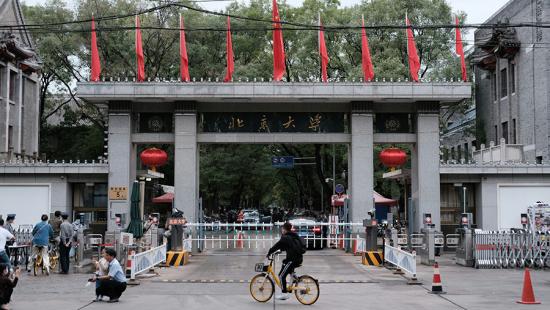P. Sainath: Migrants and the Moral Economy of the Urban Elite

image / Evgeny Matveev on Unsplash
Abstract
The COVID-19 pandemic saw what was probably the largest-ever movement of human beings across India in peacetime — a greater rush of "reverse migrants" than seen at even the time of the Partition of 1947 by the British. When the prime minister gave a nation of 1.4 billion four hours notice to lockdown, many millions in the cities began walking back or seizing any form of working transport to their villages. Millions of rural migrant workers in the cities walked hundreds of kilometers from their urban workplaces back to their villages — where they correctly judged that they had a better chance of survival. Middle and upper-middle-class elites bemoaned the loss of cheap labor while the government remained in denial. Yet, we know that nearly 10 million Indians went back on trains alone (when those briefly resumed movement) in just the month of May 2020. What does this migration and movement of ordinary people reveal about Indian urbanization and growth? What questions does it pose to planners and urbanists about creating equitable, just cities?
Biography
Indian journalist and Magsaysay Prize-winner P. Sainath focuses on social and economic inequality, deprivation, and poverty, particularly in rural India. The recipient of over 60 national and global awards for journalism, Sainath has also declined several — including the Padma Bhushan, one of India's highest civilian honors, as he believes "journalists should never accept prizes and rewards from the governments they cover and critique." Sainath holds three conferred doctorates, has taught journalism in India and at various universities across the world for 37 years, and was the McGraw Professor of Writing at Princeton University in Fall 2012. His first book, Everybody Loves a Good Drought, declared a Penguin Classic in 2013, is in its 61st printing. His latest book, The Last Heroes: Foot Soldiers of Indian Freedom, is already in its 5th edition. In 2014, Sainath launched the People's Archive of Rural India (PARI), a unique online project on rural Indians: 833 million people speaking 780 living languages whose lives encompass a bewildering array of stories, occupations, arts, music, culture, and a lot more. In less than ten years, PARI has won 70 journalism awards, including every single major prize in that field in India.
Sainath is currently Lund Practitioner in Residence (2024) and A.D. White Professor-at-Large at Cornell University from 2024-2029. He is also a Distinguished Professor at NALSAR University of Law in India.







